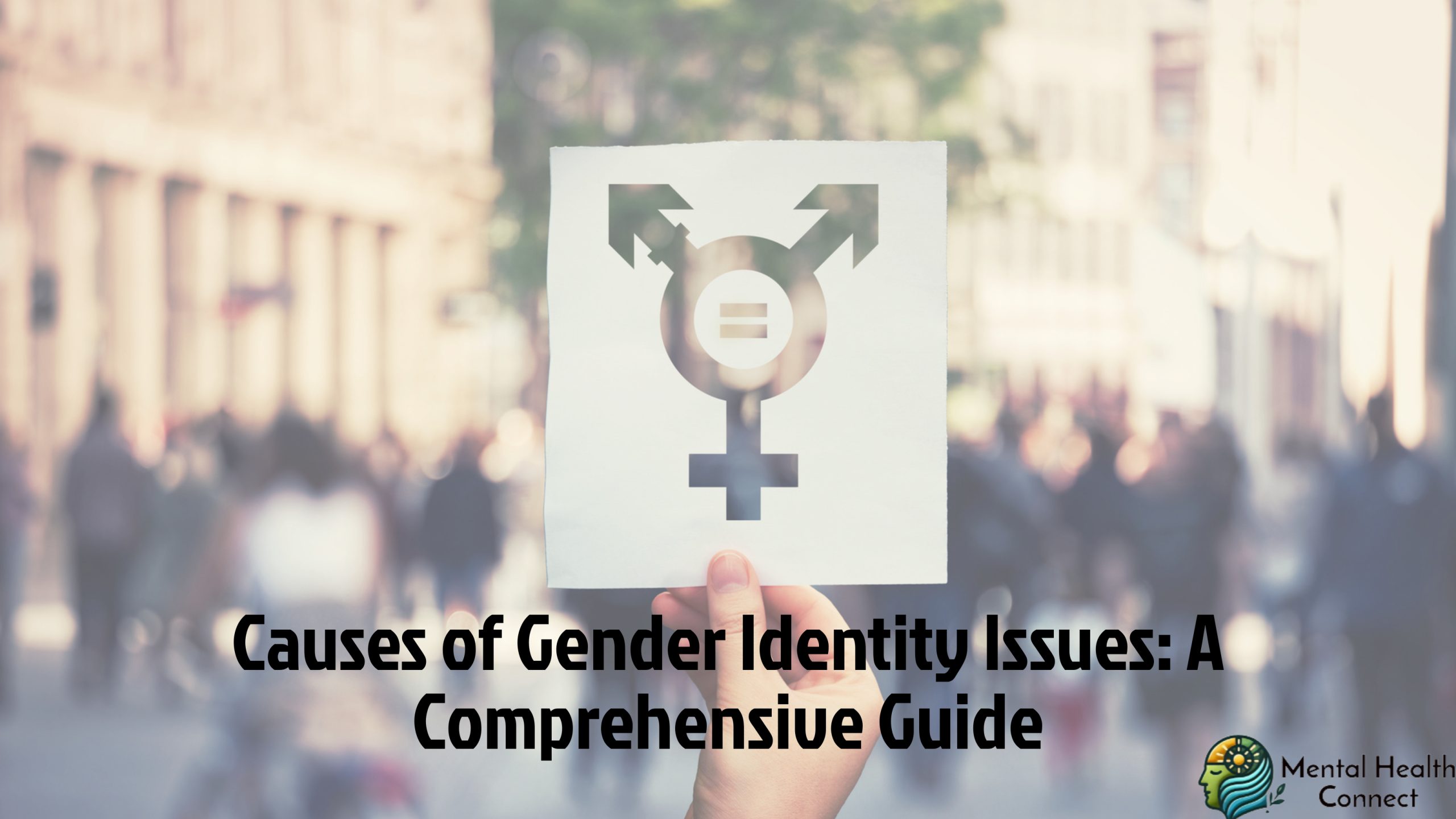Causes of Gender Identity Issues: A Comprehensive Guide

Gender identity is a deeply personal and often complex aspect of human experience. In recent years, conversations around gender identity have become more prominent, shedding light on the struggles many individuals face in understanding and expressing their gender. Causes of gender identity issues vary widely and are often influenced by a combination of biological, psychological, and social factors. Understanding these causes is essential to fostering empathy, promoting inclusion, and providing the right support to those who experience challenges related to their gender identity.
In this guide, we will explore the major causes of gender identity issues, why it’s important to understand them, how to navigate and address these challenges, and what the future holds for gender identity discussions in a changing world.
What are Gender Identity Issues?

Gender identity issues refer to the psychological and emotional discomfort or conflict that arises when a person’s gender identity does not align with the sex they were assigned at birth. This misalignment can cause significant distress and may lead to mental health challenges if not understood or supported appropriately.
For example, a person assigned female at birth may identify as male or non-binary, and navigating societal expectations, personal feelings, and external judgments can be overwhelming. These experiences are commonly associated with causes of gender identity issues, which we will delve into below.
Why Are Gender Identity Issues Important to Understand?

Understanding the causes of gender identity issues is crucial for several reasons:
- Mental Health: Unresolved identity issues can lead to anxiety, depression, and even suicidal thoughts.
- Social Inclusion: Awareness promotes acceptance and reduces discrimination.
- Policy and Education: Informed policy-making ensures equitable treatment in schools, workplaces, and healthcare.
- Personal Empowerment: Understanding one’s identity can lead to self-acceptance and fulfillment.
By identifying and addressing the underlying causes of gender identity issues, we can create a more inclusive and supportive environment for everyone.
How to Identify and Address Gender Identity Issues

Navigating gender identity issues can be complex, but several steps can help individuals and their support networks manage this journey effectively.
Step 1: Self-Reflection
- Journal your thoughts and feelings about your gender.
- Reflect on moments when you felt discomfort with traditional gender roles.
Step 2: Seek Professional Support
- Talk to a therapist who specializes in gender identity.
- Explore support groups and online forums.
Step 3: Educate Yourself
- Read books and research studies about causes of gender identity issues.
- Understand the experiences of transgender and non-binary individuals.
Step 4: Build a Support Network
- Surround yourself with affirming and understanding friends.
- Reach out to LGBTQ+ organizations for guidance.
Step 5: Express Your Identity Safely
- Start with small steps like changing pronouns or clothing styles.
- Take your time—there’s no rush.
Best Practices for Understanding and Supporting Gender Identity

Supporting someone dealing with gender identity issues or navigating your own requires patience, empathy, and knowledge.
For Individuals
- Be honest with yourself and take your time.
- Use resources like gender clinics or identity workshops.
For Families
- Listen without judgment.
- Educate yourself about the causes of gender identity issues.
For Educators and Employers
- Include gender diversity training.
- Create policies that support inclusive environments.
Real-World Example:
In 2019, a school district in Canada implemented gender-neutral bathrooms and found a significant increase in comfort levels among students identifying as transgender or non-binary. Such efforts show how understanding and addressing the causes of gender identity issues can lead to real, positive change.
Common Mistakes & How to Avoid Them
Mistake 1: Confusing Gender Identity with Sexual Orientation
- Solution: Understand that gender identity is about who you are, while sexual orientation is about who you’re attracted to.
Mistake 2: Assuming It’s Just a Phase
- Solution: Respect individual experiences; gender identity is deeply rooted and not simply a trend.
Mistake 3: Misusing Pronouns
- Solution: Ask and use correct pronouns; it shows respect and support.
Mistake 4: Overgeneralizing the Causes
- Solution: Recognize that the causes of gender identity issues vary from person to person.
Future Trends & Predictions

The conversation around gender identity is rapidly evolving. Here are some future trends to watch:
- AI & Healthcare: AI tools are being developed to better support mental health assessments, including those related to gender identity.
- Legal Advancements: More countries are recognizing non-binary and third-gender identities legally.
- Cultural Shifts: Increased visibility of trans and non-binary people in media is reducing stigma.
- Educational Reform: Schools are introducing gender-inclusive curricula to address the causes of gender identity issues early on.
FAQs About Causes of Gender Identity Issues
1. What are the main causes of gender identity issues?
The main causes include biological factors (hormones, genetics), psychological influences (childhood experiences), and sociocultural conditions (societal expectations, discrimination).
2. Can gender identity issues be treated?
These are not issues to be “treated” in the traditional sense but understood and supported. Therapy can help individuals explore their identity and cope with challenges.
3. Is there a link between trauma and gender identity issues?
Some studies suggest trauma can influence identity development, but it is not a direct cause. Gender identity is multifaceted.
4. Are gender identity issues common?
Yes. As awareness grows, more people are exploring their gender identity, and experiencing these issues is more common than previously thought.
5. Can children experience gender identity issues?
Absolutely. Many children show signs of gender incongruence early in life. Support and open communication are key.
6. How do I support a loved one facing gender identity issues?
Listen actively, avoid judgment, and educate yourself about gender diversity.
7. What role does culture play in gender identity issues?
Cultural norms and values can greatly influence how individuals perceive and express their gender, and may either support or hinder their journey.
-
 How to Support Someone with OCDApril 17, 2025
How to Support Someone with OCDApril 17, 2025 -


Leave a Reply